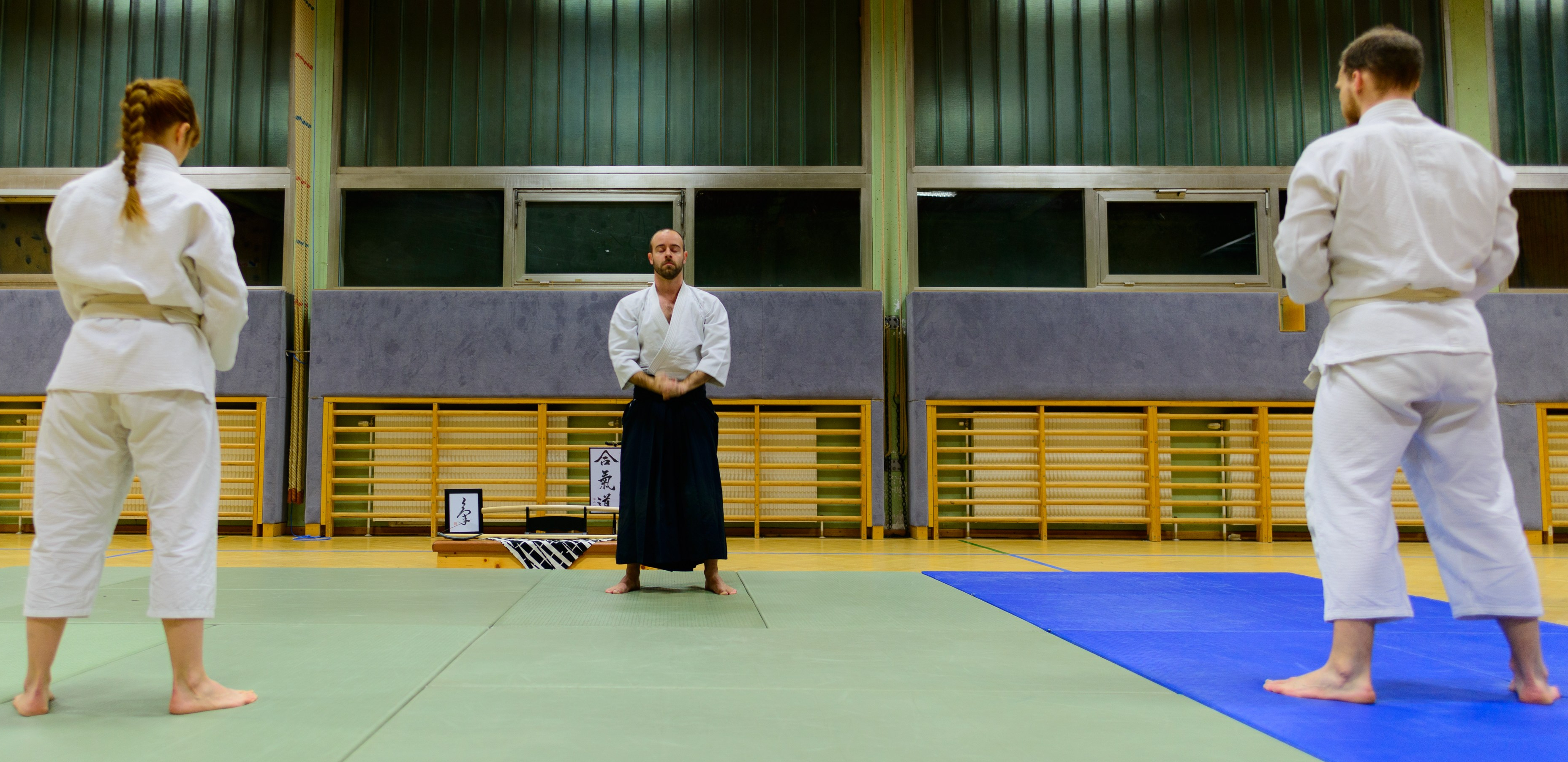About spiritual mindsets in budo
In budo and kobudo, terms that are used to describe one or more types of mindset are encountered across disciplines. These include fudoshin, mushin, shoshin and zanshin. Achieving and maintaining these – even outside of training in daily life – are goals that are considered desirable in martial arts. The following is an attempt at explanation and differentiation.

shin 心
Even when pronouncing them, it is noticeable that the four words have one thing in common, namely the element shin, which also exists as an independent term or character in Japanese. This (心) can literally be translated as spirit, heart, core (of a thing) or, in the present context, as mindset.
As we do not want to rank or rate the individual terms regarding their importance, they are listed in alphabetical order, starting with …
fudoshin 不 動 心
From my own experience, I am particularly familiar with this ideal to strive for from the iaijutsu of the Ryushin Shouchi Ryu. However, it can also be found in Aikido and other martial arts.
fudō is made up of the characters 不, fu (non-, negative) and 動, dō (confusion, movement). Translated in combination, this results in: immovable, firm, unmoving, steadfast, unshakeable. Somewhat simplified, fudōshin therefore means: unshakeable mindset.
Chang (2014) describes fudoshin as a state of unshakeable mind, unperturbed by the challenges that lie ahead. In this way, a person can always find inner peace, regardless of external conflicts.
mushin 無 心
The “balanced mind” or “mental preparation” (for example for a counter-attack) are meanings that are inherent in the term mushin. 無 (mu) means: nothing, zero, none. “Mushin is the essence of Zen; and a cornerstone of Japanese martial arts.” (Chang, 2014).
“It is a concept that liberates the mind from the restrictions of the present situation.“
– Chang, 2014
The idea is to be mentally unattached to anything, to remain unattached to anything and, conversely, to be open to and ready for anything (or in the budo context, for example, any attack etc.). A budo saying is: mizu no kokoro (水 の 心). This means: “A spirit like water.” This is exactly how mushin is to be understood, says Chang (2014).
shoshin 初 心
The term shoshin also comes from Zen Buddhism and means something like “beginner’s mind”. 初 (sho-) is translated as first or new. “It is important to be aware of one’s own shortcomings”, writes Chang (2014), “and not to become intoxicated by small advances”.
“The beginner’s mind is not naive or lacking conviction. It is accepting one’s weaknesses and knowing oneself.“
– Chang, 2014
You should therefore maintain a humble attitude towards the (martial) art. In this way, the mind and body remain constantly open to new, different possibilities that open up during training, for example. This applies equally to everyone, regardless of the level they believe they have reached.
Ultimately, all of this simply means always approaching things with the same openness and attention as you did (ideally) as a complete beginner.
zanshin 残 心
“A state of sustained vigilance in awareness of the surroundings” is Chang’s understanding of the zanshin state of mind. 残 (zan-) means to remain or surplus or remainder.
“zanshin therefore is a state of (…) mind that is still or relaxed yet alert and is totally present in every moment of any given action or activity.“
– Chang, 2014
senshin 先心
Senshin refers to a purified spirit and an enlightened mind and attitude, often associated with the Buddha mind. While fully embracing senshin is rare, it is attainable. The challenge lies in the fact that it cannot be forced and requires a lifetime of practice, including mastering one’s thoughts and continuously purifying the spirit.
“Those who are possessed by nothing possess everything.”
– O-sensei Morihei Ueshiba
Senshin is considered the highest level of not only Budo. At this level, you will hold all life as sacred, you will be able to perceive how everything fits together to make the whole. You will understand how each part of the Universe is connected and how something that affects one part of the Universe will ultimately affect us all. You begin to see the world in a totally different way which affects your thoughts and intentions making them pure and sincere and your mind and spirit will become one. (see: Senshin – Enlightened Mind, Kokoro Kai Website)
Put simply, zanshin can therefore also be harmonised with vigilance, mindfulness, attention and concentration, although the term is probably to be understood beyond this in the Eastern understanding.

Short digression: The character for shin (心) is also used in our dojo name, Yuyashinkai (ユヤ心会): The proper name is made up of the syllables yu (ユ) for yuki (雪, snow) and ya (ヤ) for yama (山, mountain) as well as shin (心, soul or spirit). The suffix –kai (会) at the end means club or group.
This article has first been published in German language on April 19th, 2018.
Sources:
Chang, Eli (2014): Article series on fudoshin, mushin, zanshin and shoshin. URL: https://aikidonosekai.wordpress.com
Hademitzky, Wolfgang: Kanji und Kana. Die Welt der japanischen Schrift in einem Band. Lernbuch und Lexikon. München: Iudicium Verlag GmbH, 2012.
Author unknown (2022): Senshin – Enlightened Mind, Kokoro Kai Website
URL: https://www.aikidocornwall.uk/index.php/blog/senshin-enlightened-mind
Taylor, Michael W. (2004): Aikidō terminology. An essential reference…
jisho.org (2018)
wadoku.de (2018)
Author’s note: I do not want the articles I have written to be seen as the last resort and I make no claim to completeness. Rather, I hope to be able to make a contribution to a juxtaposition of interpretations and a lively debate about budo. I would also like to politely invite all readers to comment, critically scrutinise, edit, supplement, etc. Thank you very much.